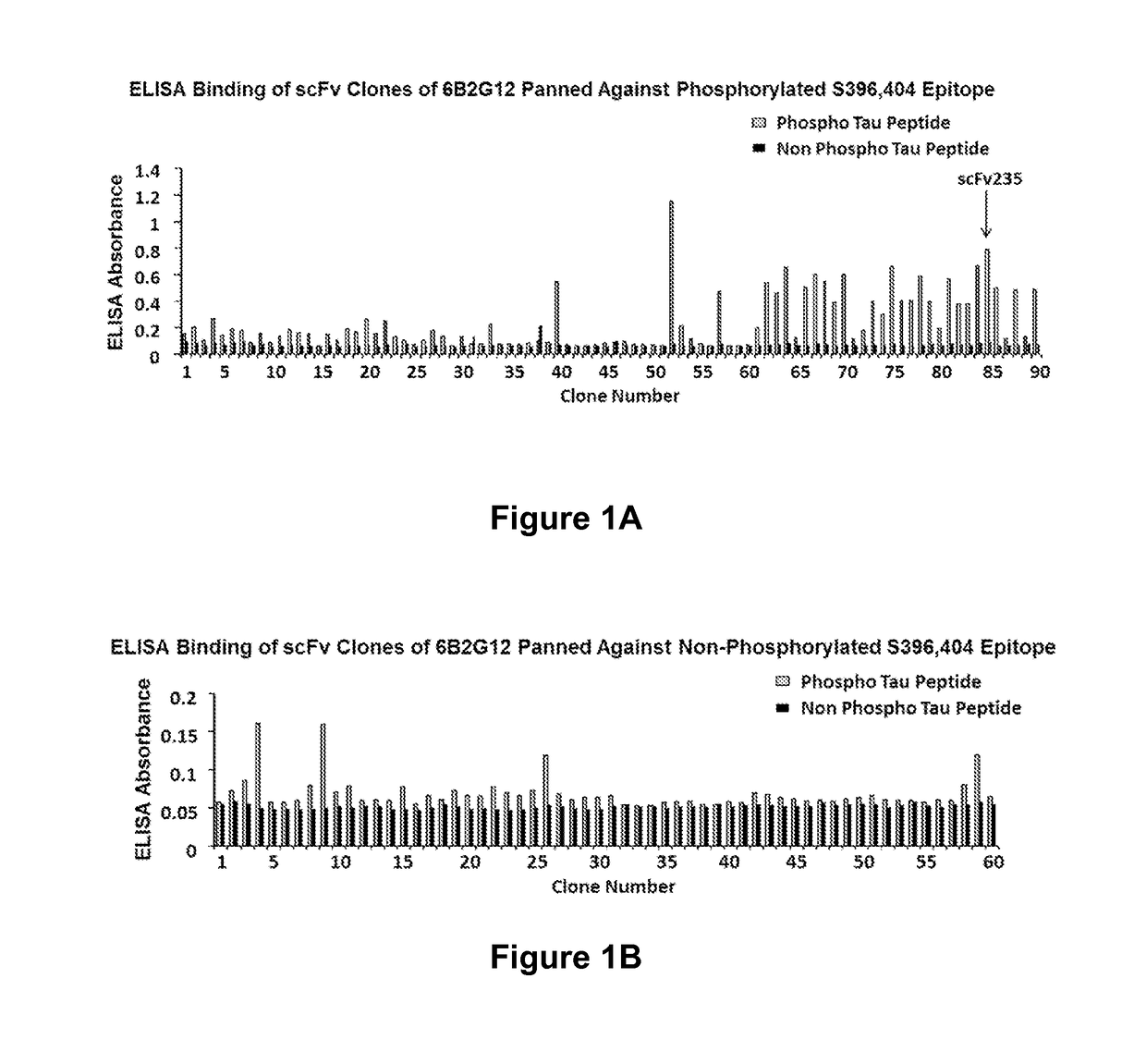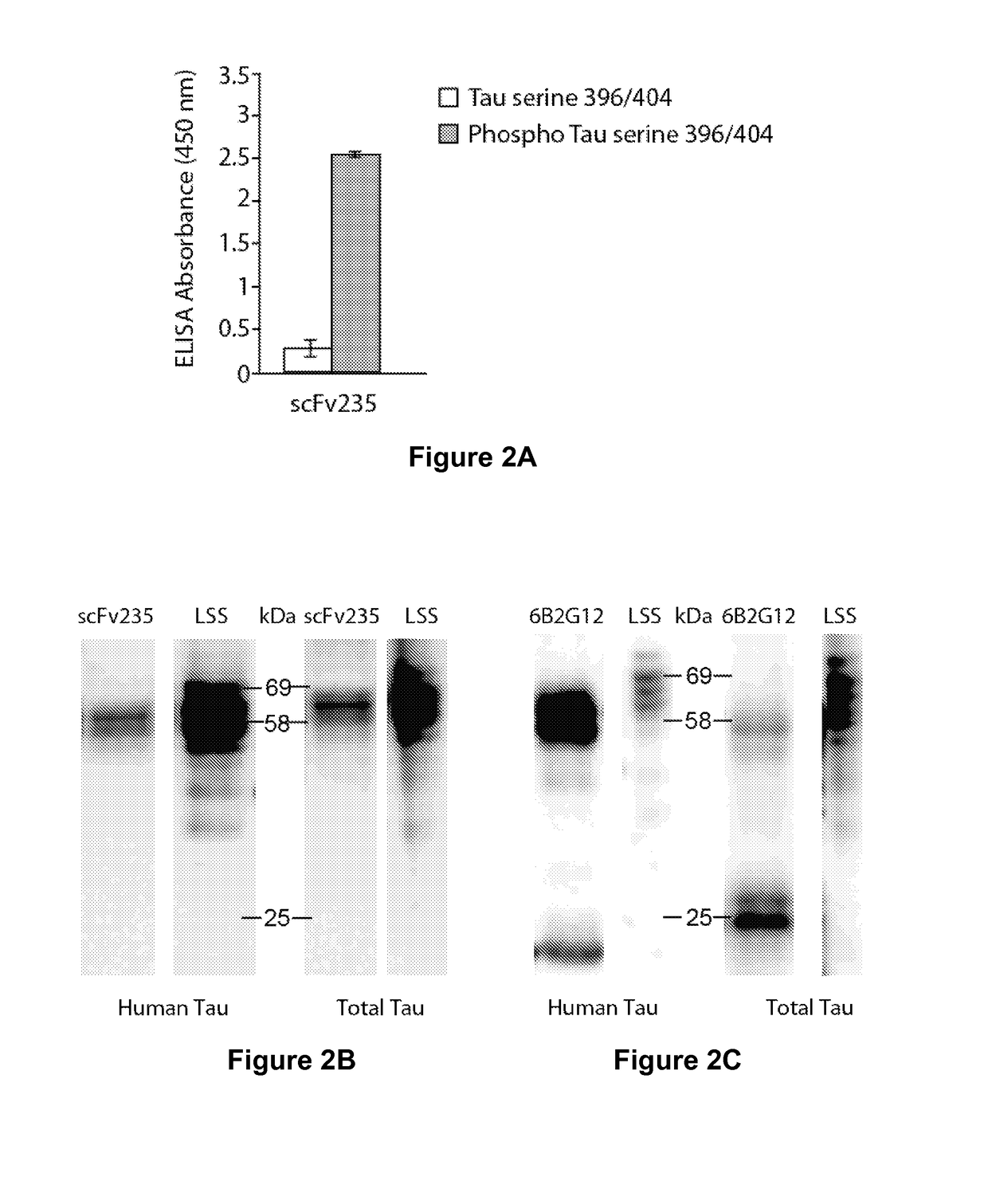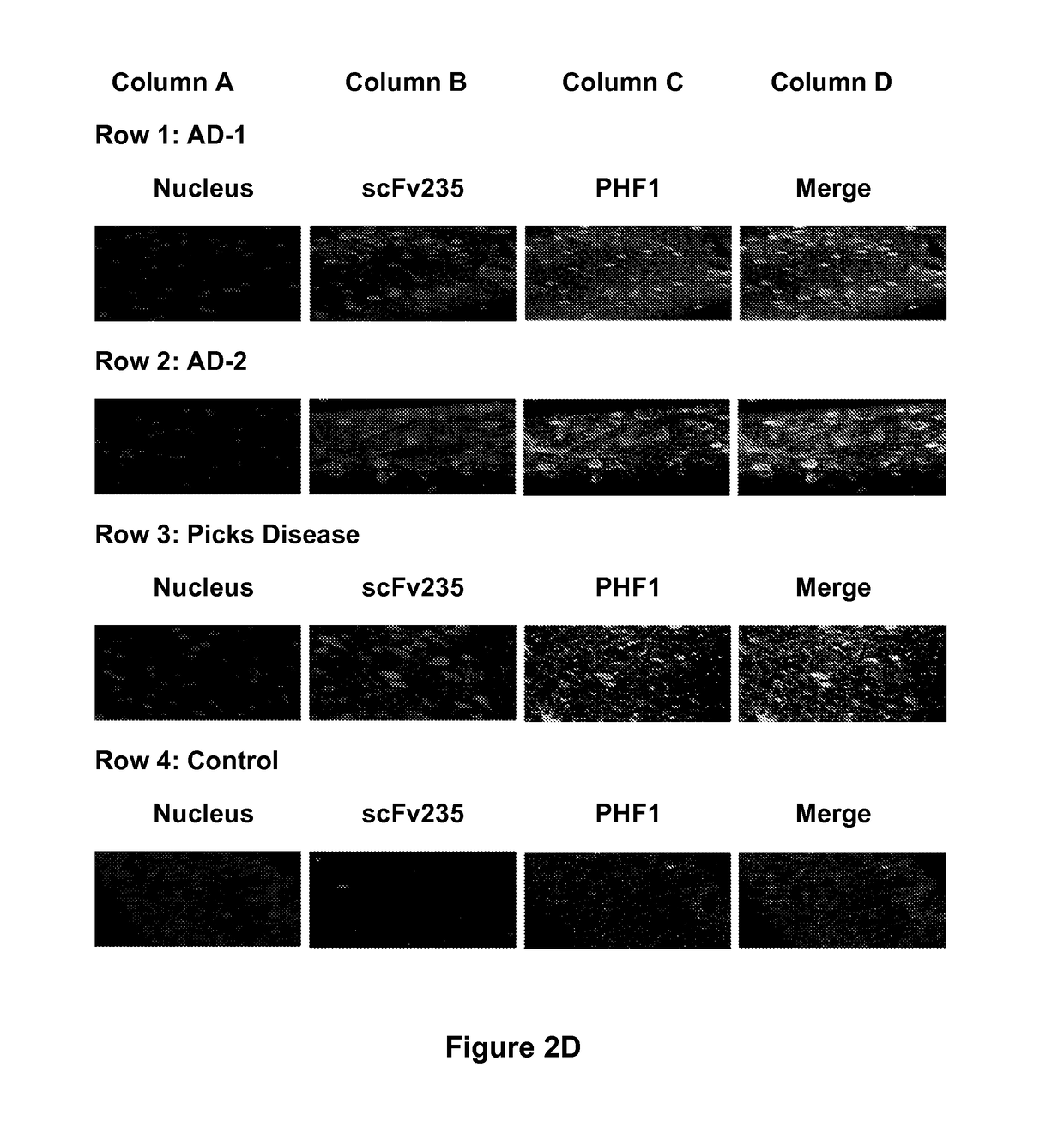Tau imaging ligands and their uses in the diagnosis and treatment of tauopathy
a technology of tauopathy and imaging ligands, which is applied in the field of antibody-based probes, can solve the problems of troublesome and difficult diagnosis of tauopathy, especially at an early stag
- Summary
- Abstract
- Description
- Claims
- Application Information
AI Technical Summary
Benefits of technology
Problems solved by technology
Method used
Image
Examples
example 1
Isolation of scFv235
[0228]scFv molecules were generated from hybridoma clone 6B2G12 (raised against P-Ser396 / 404 of the Tau protein) (Congdon, E. E. et al. (2013) “Antibody Uptake into Neurons Occurs Primarily via Clathrin-dependent Fcgamma Receptor Endocytosis and Is a Prerequisite for Acute Tau Protein Clearance,” J. Biol. Chem. 288:35452-35465; Gu, J. et al. (2013) “Two Novel Tau Antibodies Targeting The 396 / 404 Region Are Primarily Taken Up By Neurons And Reduce Tau Protein Pathology,” J. Biol. Chem. 288(46):33081-33095). Briefly, the hybridoma cell line 6B2G12 was grown at 37° C. with 5% CO2 in RPMI medium containing streptomycin (50 μg / ml) and Penicillin G (50 U / ml), and its mRNA was isolated and purified as per the protocol of an RNA isolation kit (Promega), and subsequently stored at −80° C. The first strand cDNA was constructed as per the protocol of a first strand cDNA synthesis kit (Takara kit (TAK6115A)).
[0229]Clones were screened for their ability to express scFv molecu...
example 2
Characterization of scFv235
[0233]A single construct of those, scFv235 showed superior phospho-epitope specificity both when the peptide is coated on ELISA plates (FIG. 2A) as well as in Biacore when the molecule was immobilized and the binding peptides are in solution. Furthermore, scFv235 or its parent antibody, 6B2G12, immunoprecipitated Tau protein in brain homogenates of individuals who had Alzheimer's disease (FIGS. 2B-2C), and show partial co-localization staining with pathological Tau on fixed Alzheimer's and Pick's disease brain tissue (FIG. 2D-2E). Significantly, scFv235 detected only full length Tau protein bands, whereas 6B2G12 bound to both full length and degraded Tau fragments.
[0234]The His-tagged scFv235 was purified using Ni-NTA agarose resin loaded in a gravity column, following the Qiagen kit protocol. The antibody fragment was then dialyzed in PBS and used for further characterization. Phospho-selectivity of the purified scFv was first confirmed in an ELISA assay ...
example 3
Animals, Injections of Labeled Antibodies and IVIS Imaging
[0244]In light of its superior characteristics, scFv235 was chosen for in vivo imaging in mice. Mice were housed in AAALAC-approved facilities and received food and water ad libitum. The experiments were performed under an IACUC-approved protocol. Three different transgenic tangle models were used: htau (Andorfer, C. et al. (2003) “Hyperphosphorylation And Aggregation Of Tau In Mice Expressing Normal Human Tau Isoforms,” J. Neurochem. 86:582-590); htau / PS1 (Boutajangout, A. et al. (2010) “Immunotherapy Targeting Pathological Tau Prevents Cognitive Decline In A New Tangle Mouse Model,” J. Neurosci. 30:16559-16566), and JNPL3 (Lewis, J. et al. (2000) “Neurofibrillary Tangles, Amyotrophy And Progressive Motor Disturbance In Mice Expressing Mutant (P301L) Tau Protein,” Nat. Genet. 25:402-405). Controls were wild-type mice and transgenic Aβ plaque mice (Tg-SwDI (Davis, J. et al. (2004) “Early-Onset And Robust Cerebral Microvascula...
PUM
| Property | Measurement | Unit |
|---|---|---|
| time | aaaaa | aaaaa |
| pH | aaaaa | aaaaa |
| concentration | aaaaa | aaaaa |
Abstract
Description
Claims
Application Information
 Login to View More
Login to View More - R&D
- Intellectual Property
- Life Sciences
- Materials
- Tech Scout
- Unparalleled Data Quality
- Higher Quality Content
- 60% Fewer Hallucinations
Browse by: Latest US Patents, China's latest patents, Technical Efficacy Thesaurus, Application Domain, Technology Topic, Popular Technical Reports.
© 2025 PatSnap. All rights reserved.Legal|Privacy policy|Modern Slavery Act Transparency Statement|Sitemap|About US| Contact US: help@patsnap.com



